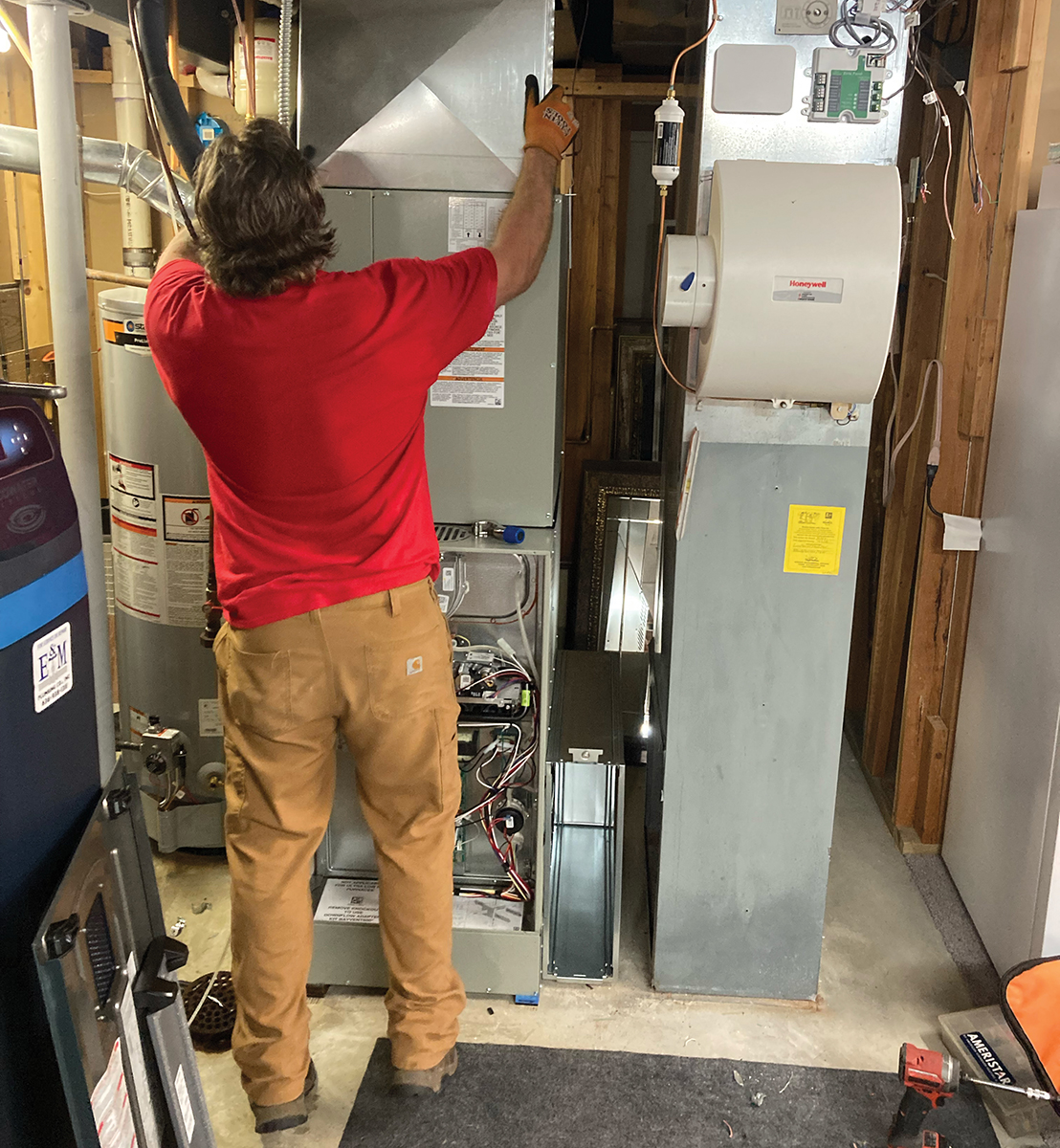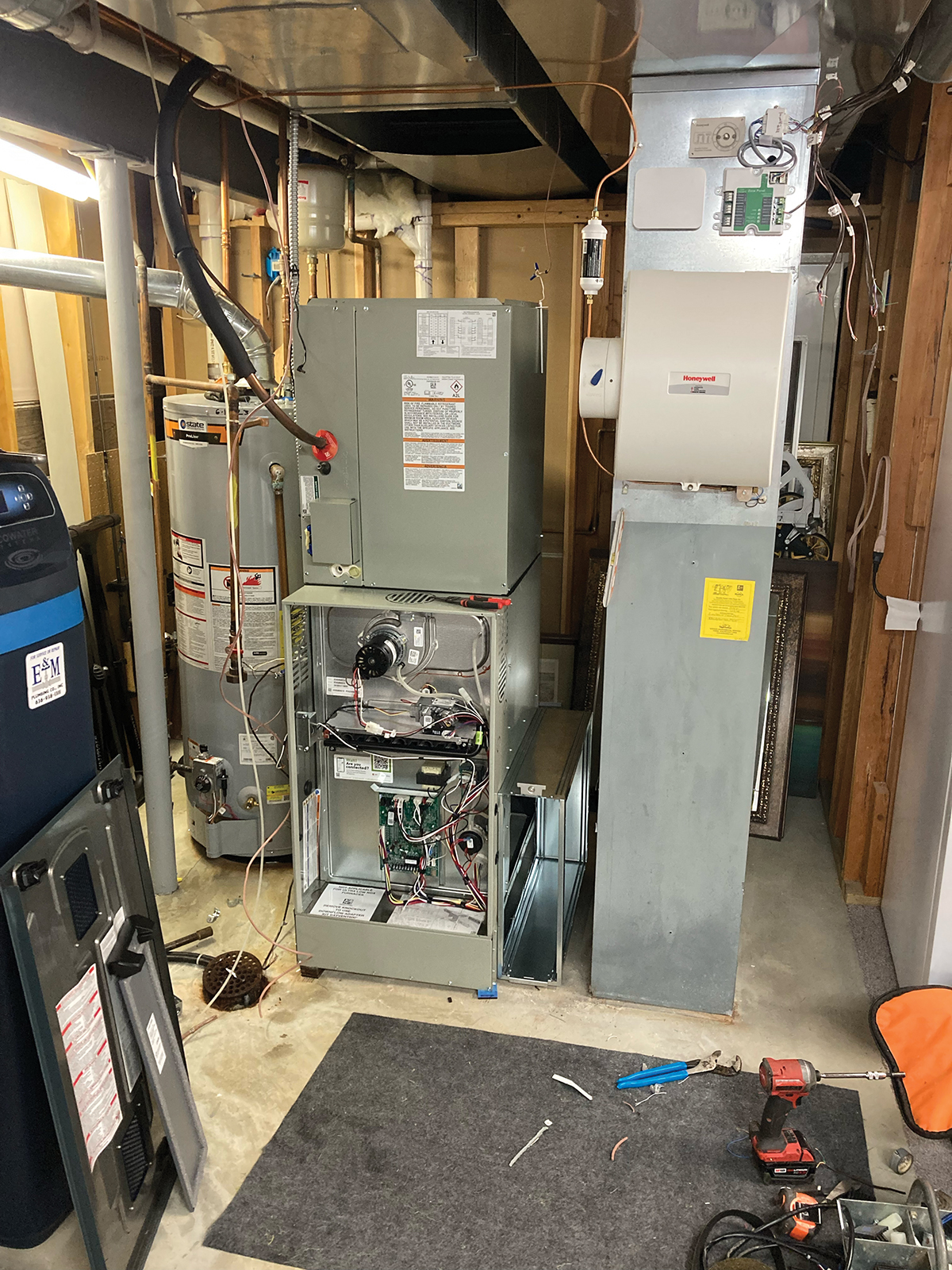RESIDENTIAL: How Zipf-Air Boosted Profits by Going Residential
By flipping his business model and focusing on customer service, high-end brands and Indoor Air Quality, John Zipf turned a commercial-heavy HVAC company into a thriving residential operation.

We’re more profitable than we used to be, because we went from doing 85% commercial and 15% residential to doing 15% commercial and 85% residential,” says John Zipf, President of Zipf-Air Inc. in St. Louis, Missouri. “The margins are better in residential, you get paid quicker, and it's a happier place to work.”
Residential work is about customer service and offering financing options more than it is about just fixing the air conditioner, according to Zipf-Air Inc.
Changing his business model from commercial to residential required learning a new skill set. “You have to master soft skills first,” Zipf says. “It's not about fixing the air conditioner. It's about customer service and offering financing. You need to be more of a retailer and less of a contractor. You have to be attentive. People don't care how much you know until they know how much you care. They have to know that you care about them and their family and their house.”
One way to show concern for customers is by improving their Indoor Air Quality. “People are in tune with indoor air quality (IAQ) for their house because they spend half their life inside their house, and they want to be healthy,” Zipf says. “We sell air scrubbers, which are ionizing units that generate hydrogen peroxide molecules. They put a steady strip of peroxide down the duct work, which kills things that are growing in there. We offer HEPA filters, which are important to good filtration.” IAQ options improve Zipf’s bottom line. “By the time you put the filtration on, and the humidifier and the air scrubber, you're looking at 20% of the job. So contractors who aren't looking at IAQ are dropping the ball. They're leaving 20% on the table, plus they're not allowing the customer to make up their own mind about whether they want to buy it. If you don't offer it to them, they can't buy it.”

As Zipf grew in the residential market, his biggest shift was learning not to worry about having the lowest prices. “The typical commercial industrial contractor is used to doing construction work, where the lowest price gets the order,” Zipf says. “If a commercial contractor is going into the residential market, he has to lose that mentality. Would you want the lowest price guy in your house? If it's replacing the air conditioner at my manufacturing plant, maybe choose the lowest guy there, but not when they're coming to somebody's home. Most of the time in the residential market, the winner is the guy who shows the best value.”
Zipf's customers know their brand names, so he provides a variety of products to meet their needs. He also uses search engine optimization to improve Zipf's ranking in search results when potential residential customers in his area are searching for repair companies.
Providing the best values begins with high-quality equipment, which gives Zipf another advantage. When he started working in St. Louis, he and many of his competitors offered upper-end HVAC systems. That changed after most of the other residential contractors were bought out by a private equity firm. “Their prices went up significantly,” Zipf says. “These guys have to show investors a larger return on investment than I do.” The equity firm dictates what types of equipment they can offer because it has a national account with a lower-cost brand. Zipf still carries the higher-end brand, which lasts over twice as long as the brand his competitors are required to sell. “It’s worth more because it'll last longer and it's better.”
Zipf’s customers are very sensitive to the difference in brands. “A guy that owns an office building has probably never been on his roof before and never looked at his air conditioners,” Zipf says. “But a guy who lives in an affluent area not only looks at his air conditioner, he also probably polishes it. Even people who are not affluent are brand specific.”

Customers who demand higher-value equipment can find Zipf because he uses search engine optimization (SEO) services to let them know that he carries the brands they prefer. “For every furnace I sell, 2% of the price goes into an ad fund,” Zipf says. “If you choose to be part of the ad fund, they'll hook you up with a national search engine.” He also uses a local advertising company. Between them, the two SEO services ensure that his business appears in the results every time someone searches the web for the brand Zipf carries or pulls out their phone to google ‘Air conditioning repairs near me.’
Financing options are essential for Zipf’s success. When a customer is surprised by the final price of a new HVAC system, he explains financing options. “It’s one way to overcome an objection,” Zipf says. Fewer than 2% of his customers use financing, but it’s available for every job. “Even in an affluent neighborhood, there might be a young couple getting started that doesn't have that kind of money laying around, so you offer them an affordable way to pay.”
Published: August 28, 2025
IN THIS ISSUE
A SMART Partnership
SMACNA's President reflects on his long history of collaboration with SMART General President Michael Coleman.
AI in Construction: Navigating Opportunities and Risks for SMACNA Contractors
These next few years will be important for the construction industry, as artificial intelligence transforms key elements of how contractors operate.
ARCHITECTURAL: Crafting a Custom Vision in Steel
Thompson Solutions Group brought Plan Architecture’s wood-look steel façade to life at Little Priest Tribal College, combining precision, speed and SMACNA-backed expertise.
Artificial Intelligence: An Introduction
Since late 2022, when ChatGPT was introduced, we’ve been hearing more and more about AI, usually with more hype than explanation.
HVAC: Welded With Precision, Driven by Purpose
MechOne builds more than ductwork as it shapes the future of Colorado’s HVAC industry.
INDUSTRIAL: Leading the Charge
Toronto Sheet Metal Contractors Association member Black & McDonald installed HVAC systems and duct for Ontario’s first electric vehicle battery plant. The work required extensive communication with numerous trades.
Making AI Work: Tips & Tricks for Contractors
We are in the midst of another technology revolution, one as important as the internet or mobile phones, with artificial intelligence (AI) tools becoming increasingly accessible and practical for contractors of all sizes.
Progress, Partnerships and Possibility
SMACNA's CEO examines some of the association's work in critical subject matter areas.
RESIDENTIAL: How Zipf-Air Boosted Profits by Going Residential
By flipping his business model and focusing on customer service, high-end brands and Indoor Air Quality, John Zipf turned a commercial-heavy HVAC company into a thriving residential operation.
Trump Backs Biden-Era EO Mandating PLAs for Large Federal Construction Projects
In a surprising continuation of his predecessor’s labor policy, President Donald Trump’s administration announced on June 12, 2025
Welcome New SMACNA Members
What’s in H.R. 1, The New Tax Bill, and What It Means for SMACNA Contractors
Workforce Evolution Trends: What Construction Leaders Should Know
The dynamics of the construction labor workforce are shifting, fueled by a growing labor shortage, evolving employee expectations and a sizable portion of the workforce nearing retirement.


